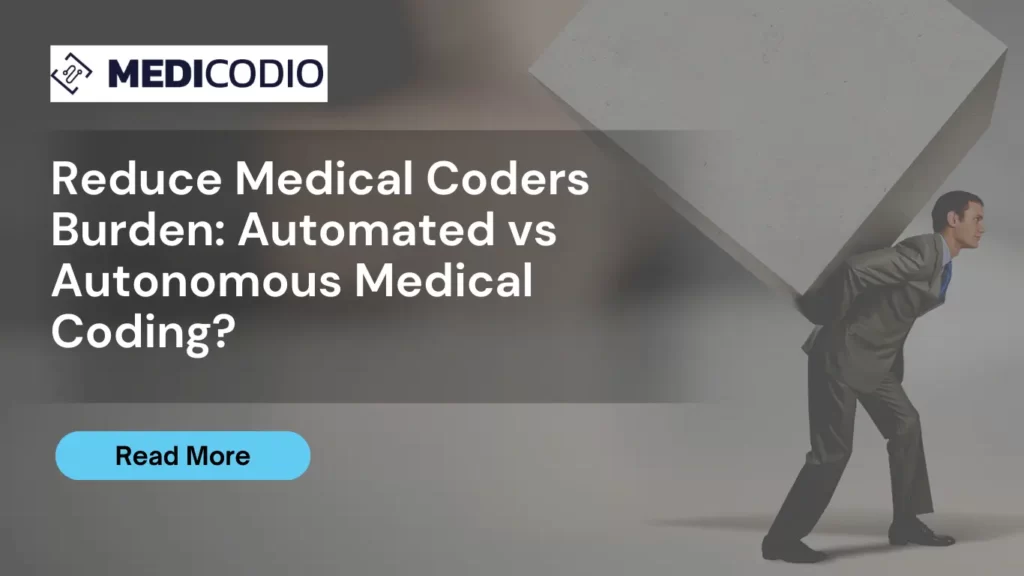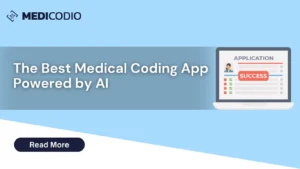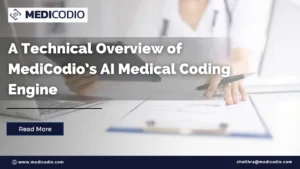In the ever-evolving healthcare landscape, the need for accurate and efficient medical coding is paramount. Traditionally, human coders have been responsible for assigning appropriate codes to medical procedures and diagnoses. However, advancements in artificial intelligence (AI) have given rise to powerful coding solutions: computer-assisted coding (CAC), autonomous coding, and AI-powered automated medical coding. In this blog post, we will delve into the ins and outs of automated medical coding vs autonomous medical coding.
What is autonomous medical coding?
It is a medical coding process that uses the power of next-generation tools such as AI/ML. An autonomous medical coding tool leverages advanced algorithms and other technologies to analyze and interpret medical documentation, extract relevant information, and generate accurate codes without human intervention or supervision.
What is AI-based automated medical coding?
AI-based automated medical coding is a process that uses artificial intelligence (AI) to extract relevant information from medical documents and suggest standardized medical codes such as ICD, CPT, and HCPCS to coders. These codes are used for billing, reimbursement, quality assessment, and research purposes. AI-based automated medical coding can improve the accuracy, efficiency, and consistency of medical coding, as well as reduce the workload and costs for human coders.
What’s the difference between automated medical coding vs autonomous medical coding?
The main difference is that autonomous medical coding assigns codes to medical data without human intervention or supervision, based on natural language understanding and reasoning. Automated medical coding, on the other hand, suggests appropriate codes for medical coders’ verification. It provides a shortlist of 4 to 5 codes based on the patient data; medical coders can then verify and choose the most suitable ones. This way, automated medical coding reduces the need for searching multiple sources and documents for coding.
While both methods aim to improve the accuracy, efficiency, and consistency of medical coding, they differ in their level of autonomy, complexity, and adaptability.
Exploring Computer-Assisted Coding Software
Computer-assisted coding (CAC) is a technology that aids human coders by suggesting appropriate codes based on the medical documentation provided. Unlike autonomous medical coding, CAC relies on pre-programmed coding rules and dictionaries to generate suggestions for coders to review and approve. To identify relevant codes, CAC systems analyze structured and unstructured clinical data, such as physician notes and electronic health records. While CAC offers valuable assistance to human coders, it still requires human intervention to make the final coding decisions. CAC helps expedite the coding process and improves coding accuracy by reducing manual errors, but it is not fully autonomous like AI-powered medical coding.
Understanding AI-Powered Medical Coding Tool
AI-powered medical coding tool leverages the capabilities of machine learning algorithms and natural language processing to automate the coding process. Through the analysis of vast amounts of medical data, AI algorithms can recognize patterns and trends to accurately suggest appropriate codes for procedures and diagnoses. AI Medical coding not only minimizes human error but also significantly reduces the time and effort required for coding. AI-powered medical coding systems continually learn and improve through the feedback loop generated by real-time coding decisions, leading to enhanced accuracy and efficiency over time. By automating the coding process, healthcare organizations can streamline their operations, reduce costs, and improve reimbursement cycles.

The Challenges Medical Coders Face
The burden of medical coders stems from several factors. Based on industry standards, a typical medical coder is expected to code approximately 15 to 25 cases per hour. This translates to around 120 to 200 cases per day when working an 8-hour shift.
Firstly, they must meticulously review a sea of patient medical records and extract pertinent information, ensuring that every detail is accurately coded. This task demands exceptional attention to detail and precision, as even a minor medical coding error can have significant repercussions for healthcare providers, insurance companies, and patients.
Analyzing and choosing appropriate codes from ICD’s 70,000 billing codes is not a joke. Alongside the vast number of codes, the healthcare system deals with a significant influx of healthcare data, with approximately 80% of it being unstructured data. The challenge lies in accurately converting detailed patient records into standardized medical codes like ICD-10 due to the sheer volume and complexity of the task.
Additionally, medical coders face the challenge of keeping up with ever-evolving coding systems and guidelines. They must stay updated on the latest changes and revisions, which often requires continuous education and professional development. Adapting to new coding standards can be demanding and time-consuming, adding to their burden.
Furthermore, medical coders often work under strict deadlines, particularly in healthcare settings where efficient billing and reimbursement processes are crucial. The pressure to code quickly and accurately can be stressful, especially when faced with large volumes of medical records.
Importance of Experienced Medical Coders
Moreover, the responsibility of medical coders extends beyond coding itself. They may encounter complex cases, ambiguous documentation, or incomplete information, which requires them to engage in extensive research and communication with healthcare professionals to ensure accurate coding. This added responsibility can contribute to their burden and increase job complexity.
Despite the challenges they face, medical coders play a vital role in the healthcare system. AI tools can be helpful, but they are not enough to replace the valuable role of experienced medical coders. These professionals have the skills and knowledge to ensure accurate and compliant coding for various health services and procedures. They also have the ability to review and correct any errors or inconsistencies that might arise from using AI tools. Experienced medical coders are important for maintaining the quality and integrity of health data and information. Efforts to support and recognize the burden they carry are important for maintaining the integrity of medical documentation and facilitating efficient healthcare processes.
What are the benefits of autonomous medical coding?
Autonomous coding represents the next frontier in medical coding technology. It encompasses the integration of AI-powered medical coding and CAC, aiming to achieve a higher level of automation. By leveraging AI algorithms and machine learning models, autonomous coding systems can analyze medical data, suggest appropriate codes, and make coding decisions independently. These systems continuously learn and adapt to evolving medical practices, regulations, and coding guidelines. The ability to operate autonomously greatly reduces the burden on human coders and enables healthcare organizations to process coding tasks more efficiently. As autonomous coding technology advances, it holds the potential to revolutionize the medical coding landscape, enhancing accuracy, reducing costs, and improving overall healthcare outcomes.
By implementing autonomous medical coding systems, manual coding tasks can be automated, reducing the burden on medical coders. Medical coders can then focus on complex cases, quality assurance, and further improve healthcare documentation, enhancing efficiency and reducing their workload.
What are the benefits of Automated Medical Coding?
Automated medical coding process can offer several benefits for healthcare organizations, such as:
-
- Improved accuracy and consistency: Automated medical coding can reduce human errors and inconsistencies that may result from manual coding, such as typos, omissions, or misinterpretations. Automated medical coding can also ensure compliance with the latest coding standards and regulations.
-
- Increased efficiency and productivity: Automated medical coding can save time and resources for healthcare providers and coders, as they do not have to spend hours reviewing and entering codes manually. Automated medical coding can also speed up the billing and reimbursement process, as claims can be submitted faster and with fewer denials or rejections.
-
- Enhanced data quality and analysis: Automated medical coding can provide more accurate and complete data for healthcare organizations, as it can capture more details and nuances from the documentation. This can enable better data analysis and reporting, as well as improved decision-making and quality improvement.
Point to be noted!
Autonomous medical coding also has some drawbacks that need to be considered.
One drawback is the ethical and legal implications of delegating coding decisions to machines. For example, who is responsible if the coding system makes a mistake that affects the reimbursement or quality of care for a patient? How can the coding system be audited and regulated to ensure compliance with standards and regulations? How can the coding system protect the privacy and security of sensitive health data? These are some of the questions that need to be addressed before autonomous medical coding can be widely adopted.
Conclusion
AI-powered medical coding has significantly transformed the medical coding process. The integration of AI algorithms, machine learning, and natural language processing enables automated medical coding systems to operate independently, with minimal human intervention. As healthcare organizations embrace this cutting-edge technology, they can expect improved coding accuracy, streamlined operations, reduced costs, and enhanced reimbursement cycles. With automated medical coding, the healthcare industry leaps forward in harnessing the power of AI to revolutionize medical coding, paving the way for more efficient and accurate healthcare services.
Try CODIO, an AI-based medical coding tool for free now!





